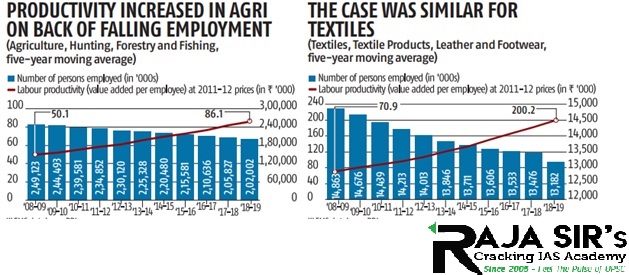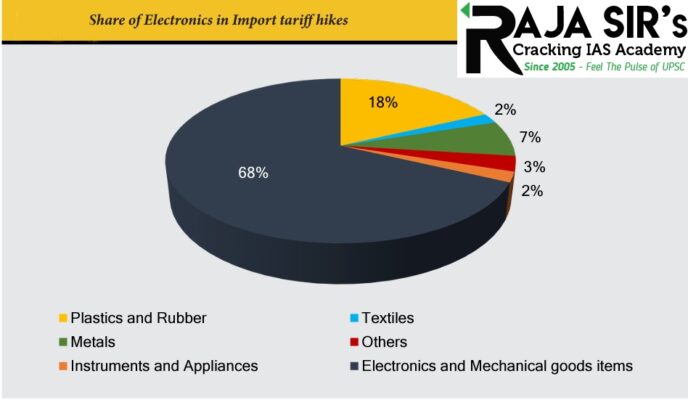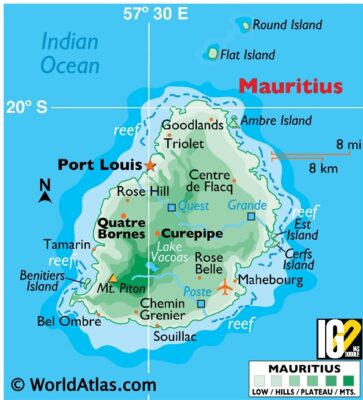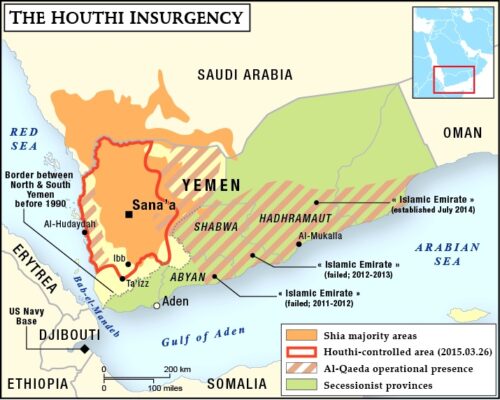- Home
- Prelims
- Mains
- Current Affairs
- Study Materials
- Test Series
Jan 23, 2022
BRENT AT 7-YEAR HIGH: HOW ARE ECONOMY, MARKETS AND INVESTORS IMPACTED?
Oil Prices are at their highest levels since 2014.
 Reasons for crude price rise
Reasons for crude price rise
 Arthur Lewis model of development
Arthur Lewis model of development
 Why Import Tariffs are Counterproductive?
Why Import Tariffs are Counterproductive?
 Need of the treaty
Need of the treaty
 India-assisted projects in Mauritius:
India-assisted projects in Mauritius:

 Khan Abdul Ghaffar Khan (1980-88):
Personal life:
Khan Abdul Ghaffar Khan (1980-88):
Personal life:
 5G network?
5G network?
 Key Changes:
Key Changes:

 Reasons for crude price rise
Reasons for crude price rise
- Problem between Russia and Ukarain: If the Russia-Ukraine crisis escalates crude oil prices will further rise.
- The attack by Yemen’s Houthis on fuel trucks in Abu Dhabi.
- Iraq-Turkey pipeline: Explosion in Turkey shut down a key oil pipeline from Iraq.
- The key oil producing countries have kept supply on a gradually increasing schedule in spite of the sharp increase in global crude prices.
- OPEC (Organization of the Petroleum Exporting Countries) decided to increase overall daily production by only 400,000 barrels, even though its own prediction is for demand to rise by 4.15 million barrels per day in 2022.
- The rise in crude prices poses inflationary, fiscal, and external sector risks.
- Crude oil-related products have a direct share of over 9% in the WPI (wholesale price index) basket.
- WPI captures the average movement of wholesale prices of goods and is primarily used as a GDP deflator.
- It is published by the Economic Adviser in the Ministry of Commerce and Industry.
- Rising oil prices will impact the current account deficit.
- It occurs when the total value of goods and services a country imports exceeds the total value of goods and services it exports.
- The rise in crude oil prices is also expected to increase the subsidy on LPG and kerosene, pushing up the subsidy bill.
- It is an intergovernmental organization or cartel of 13 countries.
- Five in the Middle East (Western Asia), seven in Africa, and one in South America.
- Founded: 1960 in Baghdad.
- Headquarter: Vienna, Austria.
- Aim:
- Coordinate and unify the petroleum policies of its member countries.
- Ensure the stabilization of oil markets, in order to secure an efficient, economic and regular supply of petroleum to consumers, a steady income to producers.
- India is not the member of OPEC.
 Arthur Lewis model of development
Arthur Lewis model of development
- In 1954, Arthur Lewis, presented a model to explain economic development in developing countries.
- Lewis posited there was surplus labour in agriculture in developing countries.
- As these economies’ flourishes, labour would move from agriculture to manufacturing.
- Agriculture labour productivity would improve and eventually wages would increase in agriculture and fall in manufacturing, bringing parity.
- Employment in Indian agriculture is falling and labour productivity is rising. However, the improved productivity is not due to the technological changes.
- Data from the capital (K), labour (L), energy (E), materials (M) and service (S) inputs (KLEMS) database, released by the Reserve Bank of India shows that there has been no significant capital investment in agriculture either.
- Labour productivity improved across industries between 2008-09 and 2018-19, but data shows that the impact was not even.
- In nine of 27 sectors, the rise in labour productivity accompanied a fall in employment. The output per worker improved as fewer people were employed.
 Why Import Tariffs are Counterproductive?
Why Import Tariffs are Counterproductive?
- Companies which have extensive global value chains are reluctant to enter India when tariffs for components are high.
- The large electronics market of India may look attractive, but it is small in global terms.
- Moreover, India does not produce about 50% of the components on which tariff has been increased.
- Hence, the impact of tariffs is likely to be adverse on India’s competitiveness
- India, China, Vietnam, Mexico and Thailand, encourage the domestic production of electronic goods in their geographies by adopting strategies like:
- Attracting foreign direct investment.
- Improving domestic capabilities and competitiveness.
- Increasing exports and then linking their markets with global value chains.
- Since 1980, China has improved its ranking in terms of office and telecom equipment export from 35 to 1.
- Vietnam has become the eighth largest exporter in 2019.
- Mexico has steadily risen from 37thposition in 1980s to 11th place.
- Thailand, which ranked 45 in 1980 has also consolidated its position in the top 15 electronic product exporters.
- India, which started at 40th position in the 1980s has gained and reached 28th position by 2019.
- One major difference between Indian and rest of the countries is heavy reliance on tariffs.
- It is due to such high tariffs that investors and electronic component makers from global markets shy away from India.
- Despite the size of the Indian economy, its participation in exports and international trade has remained low.
- In the case of mobile phones, the size of the domestic market is expected to increase by $55 billion I in 2025-26, whereas the global market is expected to reach $625 billion by the same time.
- At present, the Indian domestic market is about 5 % of the global market.
- India’s market share is not attractive enough for FDI to choose it as a location primarily on the basis of its domestic market, as Indian policies result in cost inefficiencies which create obstacles to accessing a much larger global market.
- India must keep its tariff at a bare minimum to ensure it remains competitive among its peers in the Asian market.
 Need of the treaty
Need of the treaty
- Presence of Microplastics in all marine habitats.
- These are ingested by species throughout the marine food chain
- While improvements to waste management are essential, there is no recycling system in the world for such plastics. This leads to millions of tonnes being landfilled, incinerated and leaking into the natural environment.
- Pillar 1: Monitoring and Reporting.
- Monitoring and reporting on the state of the environment and implementation will be key in understanding the relative success of the treaty.
- Pillar 2: Plastic Pollution Prevention.
- Preventing plastic pollution from entering the environment will require measures that go beyond the scope of existing conventions and agreements
- Pillar 3: Coordination.
- There are several existing international conventions and agreements that can make decisions relevant to particular aspects of plastic pollution.
- Pillar 4: Technical and Financial Support.
- All decisions will need to be based on the best scientific evidence and socio-economic assessment and some countries will require financial assistance to tackle different aspects of the plastic problem.
- This must include measures to urgently eliminate the discharge of plastics into the environment, phase plastic production down to sustainable levels in alignment with the United Nations-mandated Sustainable Development Goal (SDG) 12.
- Countries need to work toward reducing the climate impact from extraction, processing, cracking and polymerization through targeted measures in their NDCs under the Paris Climate Agreement.
- Countries must ensure that the proposed target to eliminate plastic waste discharges by 2030 is upheld and harmonised with the objectives of a new global plastics treaty.
 India-assisted projects in Mauritius:
India-assisted projects in Mauritius:
- India initiated two projects:
- A Civil Service College will help in skilling government officers, for Mauritius' continued progress.
- 8 MW Solar PV Farm, which will help mitigate the climate challenges that Mauritius faces as an island country.
- Two memoranda of understanding (MoU's) were also exchanged:
- Indian grant assistance for the implementation of small development projects.
- Extension of USD 190 million Line of Credit for infrastructure projects.
- Diplomatic relations between India and Mauritius were established in 1948.
- Mauritius is a key part of India’s “Neighbourhood First” policy.
- Vaccine Maitri programme: Mauritius was one of the first countries to receive Indian vaccines and supplies.
- India is one of the largest trading partners and exporter of goods and services to Mauritius.
- India’s exports to Mauritius comprises largely of petroleum products.
- Mauritius exports to India includes Vanilla, Instruments and apparatus for medical/surgical sciences, Needles, Aluminum alloys etc.
- The comprehensive economic cooperation and partnership agreement (CECPA) signed with Mauritius was India’s first free trade agreement with any African country.
- Aim: to make the island nation a hub for Indian investments in the region.
- Mauritius was the single largest source of FDI into India during the financial year 2017-18.
- The Indira Gandhi Centre for Indian Culture (IGCIC) is one of the largest centres of Indian Council for Cultural Relations.
- The Mahatma Gandhi Institute (MGI) was founded for the promotion of Indian culture and education.
- India and Mauritius signed pacts of leasing a Dornier aircraft and a Dhruv advanced light helicopter.
- It is intended for monitoring the exclusive economic zone of Mauritius.
- Mauritius and India relation is integral with respect to the shared waters of the Indian Ocean region.
- It shares maritime cooperation vision of SAGAR -Security and Growth for All in the Region.
- India also deployed equipment and experts to contain the Wakashio oil spill.

- Yemen’s Houthi group has taken responsibility for the attack
- UAE is part of the Saudi-led coalition in Yemen fighting Houthi rebels.
- The roots of Houthi movement can be traced to “Believing Youth”, a Zaydi revivalist group founded by Hussein al-Houthi and his father, Badr al-Din al-Houthi, in the early 1990s.
- Badral-Din started building vast social and religious networks among the Zaydis of Yemen, who make up one-third of the Sunni-majority country’s population.
- The Zaydis are named after Zayd Bin Ali, the grandson of Imam Ali.
- Zayd Bin Ali had led a revolt against the Ummayad Caliphate in the eighth century.
- He was killed, but it led to the rise of the Zaydi sect.
- Badral-Din and his son launched the ‘Believing Youth’, in order to reorganize the Zaydi minority.
- The movement turned political and started attacking the regime of Ali Abdullah Saleh (first President of Yemen) and his support for the U.S.’s war on terror.
- In 2004, Yemen government issued an arrest warrant against Hussein al-Houthi.
- Since then, the Government launched multiple military campaigns in Sa’dah, the Zaydi stronghold, to end the resistance, which was locally called the Houthis movement.
- When protests broke out in Yemen in 2011 as part of the Arab Spring protests. the Houthis backed the agitation.
- Yemen, under the tutelage of Saudi Arabia and the UAE, started a national dialogue to resolve internal differences.
- The Houthis were part of the dialogue.
- Houthis believed that the proposed federal solution, was intended to weaken the movement by the Government.
- President Saleh, and some of the members launched a joint military operation.
- By January 2015, the Houthi-Saleh alliance had captured Sana’a and much of northern Yemen, including the Red Sea coast.
- In 2018, when the UAE-backed forces were making advances in Yemen, the Houthis claimed attacks against the Emirates.
- Since then, the UAE pulled out its troops from Yemen and offered support to the Southern Transitional Council.
- Recently, Giants Brigades: a militia group made up of Southern Yemenis and the Joint Forces turned their guns against the Houthis.
- They inflicted major damages on the Houthis in Shabwah on the Arabian coast.
- Therefore, the Houthis attacked on Abu Dhabi, by flying armed drones.
 Khan Abdul Ghaffar Khan (1980-88):
Personal life:
Khan Abdul Ghaffar Khan (1980-88):
Personal life:
- He was also known as the Badshah Khan, Frontier/Simant Gandhi or Bacha Khan, Fakhr-e-Afghan.
- Amir Chand Bombwal had firstly used the word Frontier/Simant Gandhi (Sarhad Gandhi) for Abdul Ghaffar Khan.
- Khan was a follower of Mahatma Gandhi and followed a non-violent way to fight against the British raj.
- He advocates for Hindu−Muslim unity and opposed the Partition of India.
- After partition, he became a Pakistani Citizen.
- Autobiography: The Frontier Gandhi: My Life and Struggle
- Received Bharat Ratan prize in 1987.
- He was associated with the Khalifat committee and the Khalifat movement (1919-24).
- Participated in Civil disobedience movement of 1930s.
- In 1929, he established the Khudai Khidmatgar (Servants of God). It was an anti-colonial nonviolent resistance movement against the British raj.
- In June 1947, Khan and other members of Khudai Khidmatgar leaders issued the Bannu Resolution an independent state of Pashtunistan for Pashtuns.
- However, the British government refused it.
- As result, he boycotted the 1947 North-West Frontier Province (NWFP) referendum.
- NWFP referendum was led to decide that NWFP would join the Dominion of India or Pakistan upon the Partition of India.
- Out of total votes, 99% of voters wanted a merger with Pakistan.
 5G network?
5G network?
- 5G refers to 5th generation mobile network.
- 5G networks could deliver faster internet with improved latency.
- Latency is the time difference between sending and receiving messages.
- It explores a whole range of services and capabilities.
- It includes deployment of autonomous cars, drones, remote healthcare, precision agriculture, virtual reality and industrial automation.
- In order to avail faster services from the 5G spectrum, operators want to operate at higher frequencies.
- Earlier the mobile operators and airlines were using different frequency bands to prevent the risk of interference.
- In the US, the radio frequencies being used for 5G are close to the ones used by radio altimeters on aeroplanes.
- The concern is that interference from 5G transmissions could stop the instruments from working properly, and cause safety problems.
- The new 5G technology could interfere with instruments such as altimeters, which measure the altitude of the aircraft.
- Altimeters emit radio waves at 4.2-4.3 Gigahertz (GHz) frequency, which could interfere with a 5G band called C-Band, which lies between 7-4.4 GHz.
- The risk of interference restricts the use of radio altimeters, which causes poor visibility.
- Altimeter readouts are used to facilitate automated landings and to help detect dangerous currents called wind shear.
- The auto-pilot mechanism enabled by altimeters ensures safety during landing and take-off.
- Not using the auto-pilot would lead to more fuel consumption and higher costs for airlines.
- India is yet to auction 5G spectrum.
- India’s 5G auctions are expected to include spectrum bands of 3.3GHz -3.6GHz.
- 5G varies from country to country.
- European Union networks operate at lower frequencies, reducing the risk of interference.
- France has buffer zones around airports, where 5G signals are restricted.
- The antennas are tilted downwards to prevent potential interference.
- Factoring is a transaction in which an entity can sell its receivables to another entity to fulfill immediate working capital or cash flow requirements.
- The buyer who purchases the receivables from the business later collects cash from the party that owes these bills.
 Key Changes:
Key Changes:
- RBI permitted all existing non-deposit-taking NBFC-Investment and Credit Companies (NBFC-ICCs), with asset size of Rs 1,000 crore and above, to undertake factoring business.
- The rules permit Trade Receivable Discounting System (TReDS) to file the particulars of assignment of receivables transactions with the Central Registry on behalf of the Factors for operational efficiency.
- TReDS is an electronic platform for facilitating financing of trade receivables of MSMEs.
- Other NBFC-ICCs can also undertake factoring business by registering as NBFC-Factor.

- Aim: To create awareness among investors about the basic concepts of the securities market.
- Capacity building of professionals in the insurance sector in International Financial Services Centres (IFSCs)
- The Insurance Institute of India was established in 1955.
- It is under the ownership of Ministry of Finance.
- It was created for the purpose of regulation and licensing of insurance underwriting profession in India.
- It is sole national apex body for insurance underwriters in India.
- To run college and conduct examinations in insurance theory and practice.
- To offer scholarships and prizes for research work bearing on insurance.
- To ascertain the law and practice relating to all matters connected with insurance.
- To become a hub of insurance, health and risk management education in Afro-Asian Countries.









 Latest News
Latest News
 General Studies
General Studies